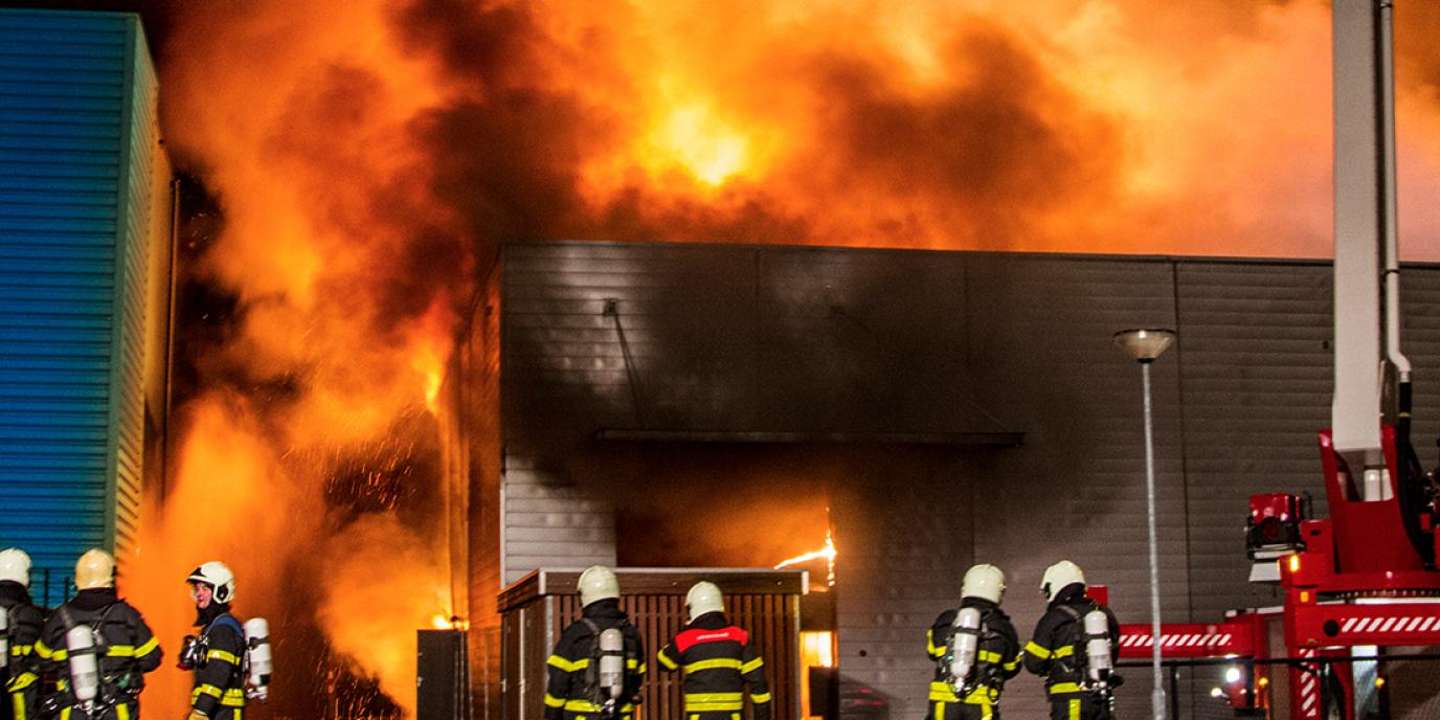

Everyone wants to minimise the impact of a fire. Here at FALK, we devote a lot of time and energy to improving the fire properties of our products. We also carry out regular tests to assess their reaction to fire. The results of these fire tests are recorded in a certificate for each product. These certificates can be used to demonstrate that a product meets the specified requirements. Feel free to request them.
The fire class of a product is an indication of the extent to which a product contributes to the development of fire and/or smoke. Simply put, the better the fire class, the less likely it is that a fire will start or spread as a result of the product’s contribution. Almost all FALK panels have a fire class of B-S1-D0. But what does that actually mean?
B: The first letter in the fire class indicates how flammable a product is and runs from A to F, A being non-flammable and F being extremely flammable. This means that FALK panels have the characteristics of low flammability, as they are classified in fire class B.
S1: The letter S stands for smoke. This refers to the development of smoke during a fire. There are three classes: S1: Emissions absent or very little; S2: Emissions with average volume intensity; S3: Emissions with high volume intensity. FALK’s panels fall into class S1.
D0: The letter D stands for (burning) droplets. This refers to droplets and particles that drip downwards, which can quickly create new fires. There are three classes: D0: No burning droplets; D1: Slow burning droplets (particles burn shorter than 10 seconds); D2: High/Intense burning droplets (particles burn longer than 10 seconds). FALK’s panels fall into class D0.
The fire resistance of a sandwich panel is expressed in minutes. This is basically the amount of time the wall is able to hold back the fire. A fire can penetrate a wall in a number of different ways. During a fire test, all these different criteria are tested and, if the result is satisfactory, are assigned to a class. For sandwich wall panels, there are three different classes:
E: This is the integrity of a panel, in other words, the amount of time that the wall is able to hold back flames.
I: The I stands for thermal insulation and indicates how long the wall can withstand the extreme temperatures of a fire.
W: Thermal radiation. In layman’s terms, this is the time it takes for the wall to become hot enough to radiate so much heat that another object at a distance can catch fire.
These criteria are not necessarily achieved at the same time. It is quite common for a product to have a different level of fire resistance for each of the different criteria. The classification is therefore often given per criterion (letter) or a combination of criteria, for example EW60 EI30. Most FALK panels also have a certain level of fire resistance. This can vary considerably depending on the product and on panel thickness. We therefore recommend that you enquire about the classification of each product.
The Dutch Buildings Decree (Bouwbesluit) distinguishes between fire penetration (WBD) and fire spread (WBO). As both situations need to be assessed, this is usually expressed as WBDBO (Resistance to Fire Penetration and Fire Spread). In addition to the fire resistance of a façade/wall, there are other factors that can influence the fire resistance of a wall, for example the distance between two fire compartments (neighbours). Translating a WBDBO requirement into the required level of fire resistance of a product is therefore not always straightforward. We are more than happy to assist you with this.
Your selected items are (0)
There are currently no downloads here.
Downloads
Coating samples
Don't forget your downloads
Fill in your email address to receive your downloads
